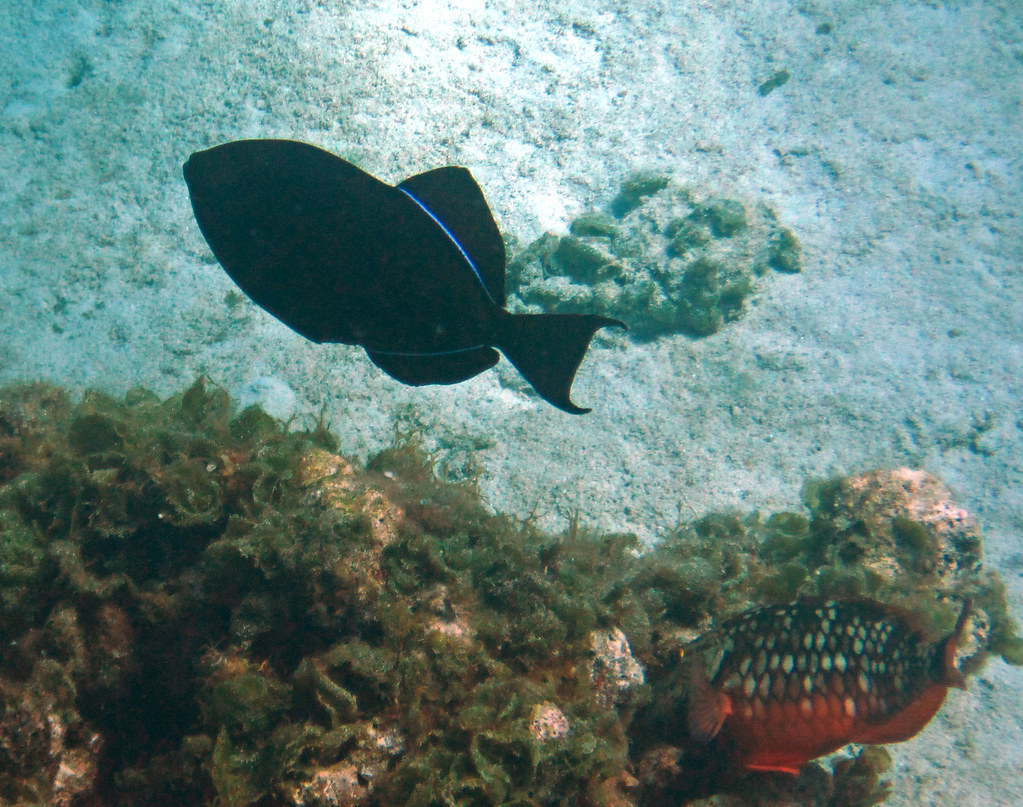Black Durgons, along with other Triggerfish, are in the Balistidae family. Melichthys niger is commonly referred to as the Black triggerfish. They are most commonly known for their incredible opalescent brilliance in direct light. Despite this, in the absence of light, the organism may seem dark and black, much to its evolutionary advantage. Thus it has been labeled as the Black Durgon.

Melichthys niger from adolescence to adulthood may measure 6-14 in. and could be found at depths 10-200 ft. (Reefguide). Their distribution has been described as circumtropical. They express a small to medium-oval morphology with a pronounced dorsal and anal fin. There is typically seen a distinctive blue-silver lining along the connective length of the fin to the main body of the individual. Pectoral fins are small relative to the size of the species and express the shape of a seashell.
The habitat of Black Durgon is restricted to the Neritic zone, and they are known to be mostly mobile as well as solitary in their behavior, perhaps due to their aggressiveness. Maximum lifespans have been estimated up to 11 years (Environmental Biology of Fishes). Black Triggerfish favor temperatures between 72-78o Fahrenheit and a pH of 8.1-8.4 (slightly basic).

The home range of these individuals is about 20o north and south of the equator in tropical regions around the globe (Black Triggerfish). They are most common to Florida, the Bahamas and the Caribbean. The Black Durgon is known to be an omnivore. This species eats essentially anything that they can procure including but not limited to: other small fish, small cephalopods, zooplankton, algae, and plants. Intriguing aspects of Melichthys niger are reflected in their ability to undergo biochemical processes to change color and iridescence. Examples of individuals turning stark white from their typical black-opal shade have been recorded and was likely an event to match the fish to its surroundings. Conspicuous blue streaks and markings can also be seen around the heads of these animals (Rolling Harbour). There are no obvious distinctions between the males and females of the species. When triggerfish get together for mating periods it is thought to be dictated by the moon and other tidal factors. Males are territorial in nature at this time as they build nests adequate enough to house thousands of eggs produced by the females. During gestation, male and female triggerfish are known to share care responsibilities of their offspring, fanning the eggs to ensure proper oxygen supply (National Geographic). The population status of Black Durgon is not currently listed as critical. They are renowned for their frequency, beauty, and contribution as one of the lesser aggressive forms of triggerfish, making them pleasurable to study and observe.
The information in this chapter is thanks to content contributions from Jason Charbonneau
